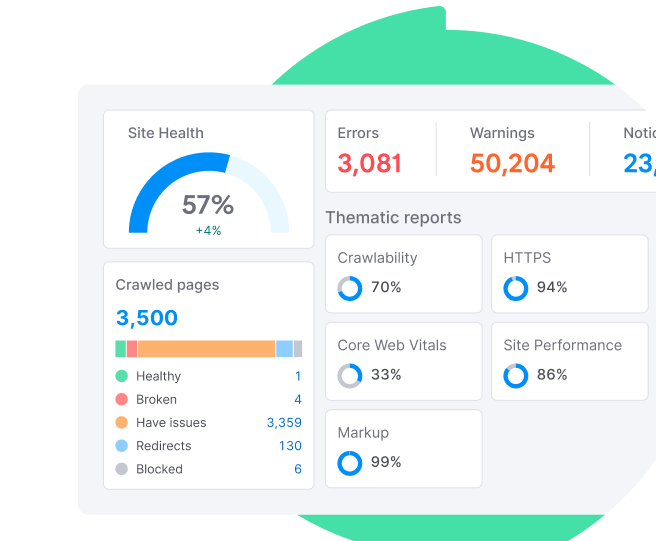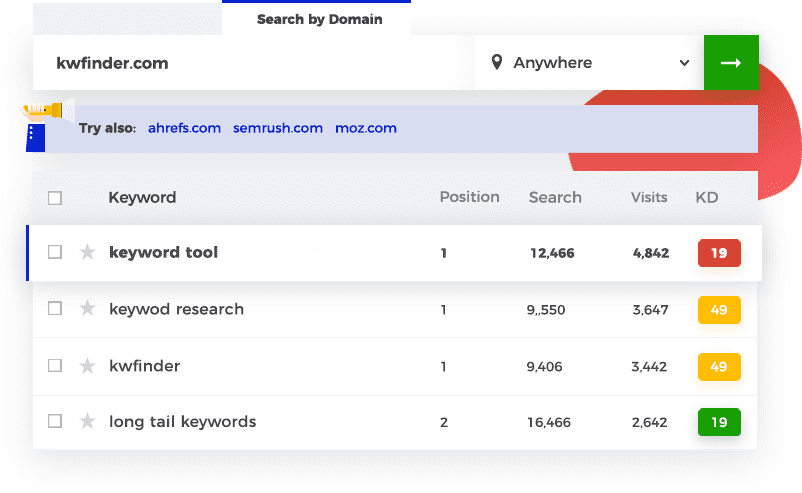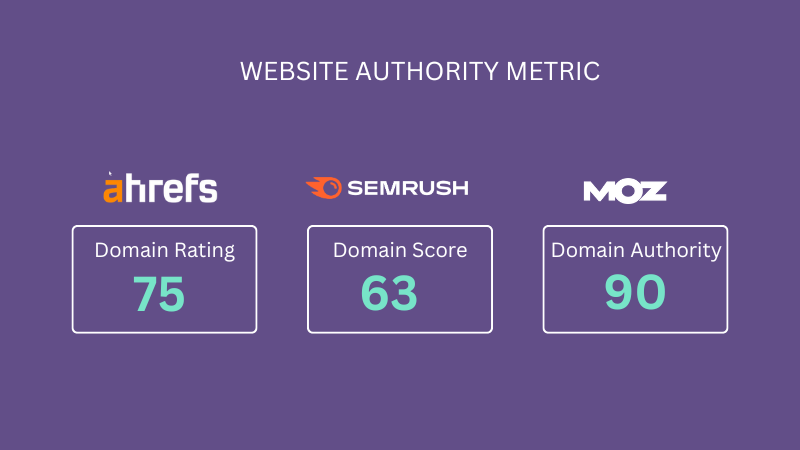In today’s competitive digital landscape, achieving high search engine rankings and consistent traffic growth is essential for long-term success.
However, gaining visibility on search engines is only half the battle; sustaining that visibility requires a solid SEO growth strategy.
This article will explore proven SEO techniques that unlock the secrets to sustainable traffic growth, providing a comprehensive guide to help businesses achieve long-term results.
1. Introduction to SEO Growth Strategies
Search engine optimization (SEO) growth strategies involve a series of techniques designed to improve a website’s visibility on search engines like Google, Bing, and Yahoo.
These strategies are vital for driving organic traffic, increasing user engagement, and ultimately converting leads into sales. Unlike paid advertising, SEO growth is more cost-effective in the long run and provides sustainable benefits.
1.1 The Need for Sustainable Traffic
Sustainable traffic means ongoing, consistent visitor growth, rather than short-lived spikes. It’s the foundation of steady business growth, as it continuously brings in potential customers.
An effective SEO growth strategy is critical for businesses that aim to stay competitive and relevant in a rapidly evolving market.
1.2 Overview of the Article
In this guide, we’ll walk you through the most effective strategies for driving and maintaining long-term SEO growth. From building a strong technical foundation to leveraging off-page SEO techniques, we’ll cover everything you need to unlock the secrets to sustainable traffic.
2. Setting a Strong SEO Foundation
2.1 Website Audit & Technical SEO

Before diving into keyword research or content creation, it’s crucial to ensure your website is technically sound.
A comprehensive SEO audit helps you identify and resolve issues that could be holding back your rankings. Some of the most important aspects of technical SEO include:
-
- Site Speed: Google has made it clear that page speed is a ranking factor. Tools like Google PageSpeed Insights and GTMetrix can help you identify and fix issues slowing down your site.
-
- Mobile-Friendliness: With the majority of users accessing websites via mobile devices, your site must be optimized for mobile performance. Google’s Mobile-Friendly Test can show whether your site is mobile-compatible.
-
- Indexing and Crawlability: Ensure search engines can easily crawl and index your site. Use tools like Screaming Frog to detect and fix broken links, duplicate content, or pages blocked by robots.txt.
2.2 Keyword Research

Keyword research is at the core of any SEO growth strategy. It’s essential to target keywords that align with your audience’s search intent and your business goals.
-
- Short-Tail vs. Long-Tail Keywords: Short-tail keywords are general, high-volume terms (e.g., “SEO”). Long-tail keywords are more specific and have lower search volumes (e.g., “SEO growth strategy for small businesses”), but they convert better and are less competitive.
-
- Tools for Keyword Analysis: Use tools like Ahrefs, SEMrush, or Google Keyword Planner to identify high-potential keywords. Look for terms with high search volume, moderate competition, and clear commercial intent.
2.3 Understanding Search Intent
Search intent refers to the reason behind a search query. Is the user looking for information (informational intent), trying to buy a product (transactional intent), or seeking a specific website (navigational intent)? Understanding and optimizing for search intent improves user satisfaction and boosts rankings.
3. On-Page SEO Optimization for Growth

3.1 Content Quality
Google prioritizes high-quality content that provides real value to users. This means your content should be well-researched, engaging, and focused on answering user queries.
-
- Keyword Optimization: Naturally incorporate your target keywords without overstuffing. Aim for a balanced keyword density and ensure that your keywords fit naturally within the content.
-
- User Engagement: Use headings, bullet points, and multimedia (images, videos, infographics) to break up large blocks of text and make your content more engaging.
3.2 Meta Tags & Headers
Meta tags help search engines understand the content of your pages and improve click-through rates (CTR).
-
- Meta Titles and Descriptions: Write compelling meta titles and descriptions that include your primary keywords and entice users to click through to your site.
-
- Header Tags (H1, H2, etc.): Use headers to structure your content logically. The H1 tag should include your primary keyword, while H2 and H3 tags break down subtopics.
3.3 Internal Linking Strategy
Internal linking is crucial for improving site navigation and helping search engines understand the structure of your website.
-
- Best Practices: Link to relevant pages within your site using descriptive anchor text. Ensure that every page is easily reachable within a few clicks from the homepage.
-
- Benefits: Internal linking helps spread link equity throughout your site, encourages users to explore more content, and improves the overall user experience.
4. Building Authority through Off-Page SEO

4.1 Link Building
Off-page SEO primarily revolves around building authority through backlinks. The more high-quality, relevant sites that link back to your content, the more trustworthy your site appears to search engines.
-
- Natural Link Building: The most effective backlinks are those earned naturally through valuable content. Focus on creating resources like guides, infographics, and blog posts that other websites will want to link to.
-
- Outreach and Guest Posts: Outreach involves contacting website owners to ask for a backlink, often by offering to write a guest post. This method is highly effective if you provide valuable content and choose reputable sites.
4.2 Social Signals
While social shares don’t directly impact rankings, they play a role in driving traffic and increasing engagement. The more your content is shared, the more likely it is to attract backlinks.
-
- Social Media Engagement: Promote your content across social media platforms like Twitter, LinkedIn, Facebook, and Instagram. Encourage readers to share and engage with your posts to increase visibility.
-
- Indirect Benefits: Viral social posts can lead to organic backlinks from other websites, indirectly boosting your SEO.
4.3 Brand Mentions
Brand mentions are references to your brand without a link. While they don’t carry the same weight as backlinks, Google still values unlinked mentions as a trust signal.
-
- Turning Mentions into Links: Use tools like Google Alerts or Ahrefs to track brand mentions and reach out to website owners to turn those mentions into backlinks.
5. User Experience (UX) & SEO Alignment
5.1 Core Web Vitals & Page Experience
Google’s Core Web Vitals focus on three key metrics: Largest Contentful Paint (LCP), First Input Delay (FID), and Cumulative Layout Shift (CLS). These factors affect how users perceive your website’s performance and play a direct role in rankings.
-
- Optimizing Core Web Vitals: Reduce page load times, minimize input delays, and prevent unexpected layout shifts by optimizing your website’s code and design.
-
- Mobile Optimization: With the majority of users browsing on mobile devices, ensure your site is fully responsive, meaning it adapts to any screen size seamlessly.
5.2 Content Design & Readability
Good user experience also depends on how your content is presented. A clean, well-structured design improves readability and keeps users engaged.
-
- Formatting: Break up content with short paragraphs, bullet points, and multimedia elements like images or videos. This makes the content easier to digest and improves time spent on the page.
-
- Readability Tools: Use tools like the Hemingway App or Yoast SEO’s readability feature to ensure your content is easy to understand.
6. Leveraging Data and Analytics for Continuous Improvement

6.1 Tracking Performance with Analytics
Monitoring your SEO efforts is critical to long-term success. Google Analytics and Google Search Console provide valuable insights into how users interact with your site and where your traffic is coming from.
-
- Key Metrics: Track metrics such as organic traffic, bounce rate, session duration, and keyword rankings to gauge the effectiveness of your strategy.
-
- User Behavior: Understand how visitors navigate your site using heatmaps and behavior flow reports. Identify which pages have high exit rates and optimize them.
6.2 Adjusting Your Strategy Based on Data
SEO is not a one-time effort—it’s an ongoing process. Regularly analyze your data and make adjustments to your strategy based on the findings.
-
- A/B Testing: Test different page layouts, CTAs, and content strategies to see what resonates most with your audience.
-
- SEO Audits: Conduct periodic audits to ensure your site remains optimized for search engines. Look for opportunities to improve and refine your strategy.
7. Local SEO Strategies for Regional Growth
7.1 Importance of Local SEO
For businesses that serve a specific geographical area, local SEO is essential for growth. Optimizing for local search helps ensure your business appears in local search results, driving foot traffic and local engagement.
-
- Google My Business: Set up and optimize your Google My Business profile with accurate NAP (name, address, phone number) information, customer reviews, and relevant business categories.
-
- Local Citations: Ensure your business is listed consistently across all local directories and websites like Yelp, TripAdvisor, and industry-specific directories.
7.2 Local Link Building and Citations
Obtaining links from local businesses, chambers of commerce, or regional news outlets is a powerful way to build local authority.
-
- Citations and Directories: Build citations from local business directories, event pages, and regional news sources. These backlinks help establish your website as a relevant authority in the area.
8. SEO for Voice Search and Emerging Technologies
8.1 Voice Search Optimization
With the rise of voice assistants like Siri, Alexa, and Google Assistant, optimizing for voice search has become increasingly important. Voice search queries tend to be longer and more conversational, so focusing on long-tail keywords and natural language is crucial.
-
- Conversational Queries: Target questions and phrases users might speak aloud (e.g., “Where can I find the best pizza near me?”). Create FAQ-style content to address these types of searches.
8.2 Adapting to AI and Future SEO Trends
AI-driven algorithms and machine learning are becoming integral to search engines. Staying ahead of the curve by optimizing for emerging technologies is key to long-term SEO success.
-
- Personalized Search: Search engines are increasingly delivering personalized results based on user preferences, location, and behavior. Create content that caters to niche audiences to take advantage of personalized search results.
9. Long-Term Growth through Content Strategy
9.1 Evergreen Content Creation
Evergreen content refers to material that remains relevant over time. Unlike trend-based content, evergreen posts provide ongoing value and continue to attract traffic long after publication.
-
- Examples of Evergreen Content: Guides, how-to articles, tutorials, and case studies are all excellent examples of content that stays relevant over time. By consistently creating evergreen content, you build a library of resources that drive traffic for months or years.
9.2 Content Refresh Strategy
Even evergreen content requires periodic updates to stay accurate and valuable.
-
- Updating Old Content: Refresh old blog posts with new information, updated statistics, or additional insights. This signals to search engines that your content is current and valuable.
-
- Repurposing Content: Convert blog posts into other formats, such as videos, infographics, or podcasts, to reach a wider audience and breathe new life into existing content.
10. Conclusion: Unlocking Sustainable SEO Growth
Key Takeaways
The path to sustainable SEO growth is multi-faceted and requires a balance of technical optimization, high-quality content, off-page authority building, and ongoing monitoring. By following the strategies outlined in this guide, you can create a long-term SEO plan that consistently drives traffic, boosts engagement, and increases conversions.
Final Thoughts
SEO is a long-term investment, but the rewards of sustainable traffic growth are well worth the effort. The key is to remain adaptable, stay up-to-date with the latest industry trends, and continuously refine your strategy based on data and performance insights.
Now that you have a roadmap to sustainable SEO growth, it’s time to implement these strategies. Monitor your progress, refine your approach, and unlock the full potential of organic search traffic for your business.
Share via:

